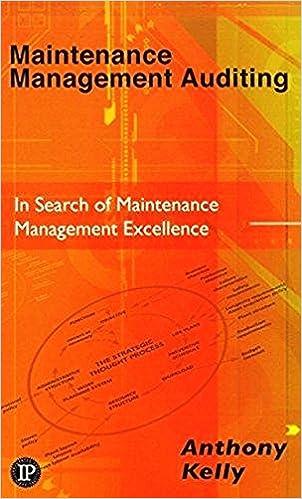Question
1- Which of the following is not a factor that the IRS looks at to determine if a loss is from a hobby or from
1-
Which of the following is not a factor that the IRS looks at to determine if a loss is from a hobby or from a business?
a.The history of the income and loss from the activity
b.Whether the activity is owned and run by the taxpayer alone
c.The financial status of the taxpayer
d.Whether the losses are due to circumstances beyond a person's control
2-
Which of the following taxpayers may not use the standard mileage method of calculating transportation costs?
a.A taxpayer who has a fleet of 10 business automobiles.
b.A real estate salesperson who drives a $70,000 Mercedes while showing houses.
c.An attorney who uses his Yaris for calling on clients.
d.A self-employed CPA who drives a computer-equipped minivan to visit clients.
e.All of these taxpayers may use the standard mileage method.
3-
Choose the correct answer.
a.The cost of a CPA review course is deductible by a bookkeeper on his Schedule C.
b.Education expenses are deductible on Schedule C even if the education qualifies the taxpayer for a new trade or business.
c.Expenses for travel as a form of education are not deductible.
d.Expenses required for education to maintain skills for the taxpayer's current business are not deductible.
4-
Which of the following is deductible as dues, subscriptions or publications?
a.Dues to a health club for a doctor
b.Subscription to the "Journal of Taxation" for a tax attorney
c.Subscription to "Vogue" magazine for a corporate president
d.Dues to the drama club for a student
e.None of these choices are correct
5-
To be deductible as the cost of special work clothing or uniforms:
a.The clothing need not be required as a condition of the job, but must not be suitable for everyday use.
b.Only the cost of the clothing is included; upkeep is not deductible.
c.The clothing must not be suitable for everyday use and must be required as a condition of the job.
d.The clothing must be required as a condition of the job, but can also be suitable for everyday use.
6-
Sue is a small business owner who often gives gifts to clients. She gives a $40 gift to her client, Mr. Smith, and his wife. Sue spent $6 to wrap the gift. She also gave out 400 calendars with her company name on them. Each calendar cost $1. Sue also gave her secretary a $370 watch for his 10 years of service. How much of the above expenses may she deduct?
a.$795
b.$446
c.$816
d.$801
e.None of these choices are correct.
7-
Richard operates a hair styling boutique out of his home. The boutique occupies 420 of the home's 1,200 square feet of floor space. Other information is as follows:
| Gross income from the boutique | $10,000 |
| Supplies for the boutique | $ 2,400 |
| Depreciation on total residence | $12,000 |
| Utilities for total residence | $ 6,000 |
What amount of income or loss from the boutique should Richard show on his return?
a.$3,500 income
b.$1,300 income
c.$0 income or loss
d.$10,400 loss
e.None of these choices are correct.
8-
Gene is a self-employed taxpayer working from his home. His net income is $7,000 before home office expenses. His allocable home office expenses are $8,000 in total. How are the home office expenses treated on his current year tax return?
a.Only $7,000 of the office expenses can be deducted, the remaining $1,000 cannot be carried forward or deducted.
b.All home office expenses can be deducted and will result in a $1,000 business loss.
c.None of the home office expenses can be deducted because Gene's income is too high.
d.Only $7,000 of the office expenses can be deducted; the remaining $1,000 can be carried forward to future tax years.
Step by Step Solution
There are 3 Steps involved in it
Step: 1

Get Instant Access to Expert-Tailored Solutions
See step-by-step solutions with expert insights and AI powered tools for academic success
Step: 2

Step: 3

Ace Your Homework with AI
Get the answers you need in no time with our AI-driven, step-by-step assistance
Get Started


